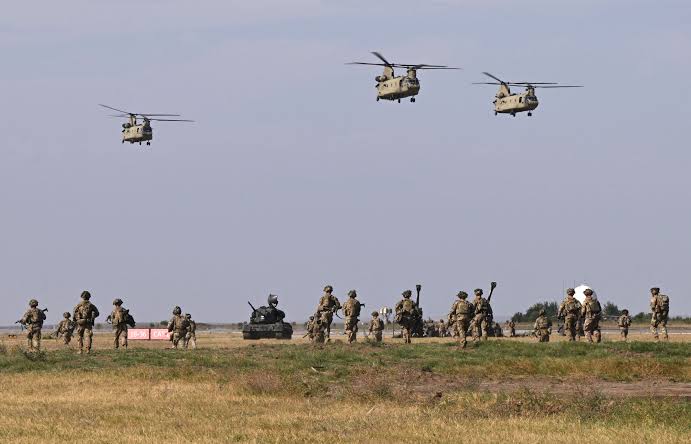NATO's Largest Ever Air Drill: A Show of Unprecedented Strength Amid Tensions

As the North Atlantic Treaty Organization (NATO) faces what it calls its 'biggest security crisis' in years, it is responding with an unparalleled display of power: its most significant air drill ever held. This momentous event is happening in Germany, demonstrating the alliance's readiness to defend its territories in the face of growing global threats.
The air drill, named "Air Defender," is an awe-inspiring demonstration of strength, involving around 10,000 personnel and 250 aircraft from two dozen NATO countries and Japan. Nearly 100 of the aircraft are provided by the United States. The two-week long exercise focuses on the protection of NATO cities and crucial infrastructure against aircraft, drones, and missile attacks, elements that have been prevalent in the ongoing war in Ukraine.
"Air Defender sends a clear message that NATO is ready to defend every inch of Allied territory," NATO spokesperson Oana Lungescu affirmed in a recent statement. Lungescu further explained the necessity of such an exercise, citing that we inhabit a 'more dangerous world' and that the NATO alliance is navigating "the biggest security crisis in a generation."
The exercise was meticulously planned around five years ago, suggesting it is not a direct response to Russia's recent invasion of Ukraine. Despite this, officials anticipate that Russian leadership, particularly President Vladimir Putin, is paying keen attention.
U.S. Ambassador to Germany, Amy Gutmann, commented on the gravity of the exercise during a press briefing last week. "This is an exercise that would be absolutely impressive to anybody watching," she stated, adding, "I would be pretty surprised if any world leader was not taking note of what this shows in terms of the spirit of this alliance, which means the strength of this alliance."
German Air Force Lt. Gen. Ingo Gerhartz, who is supervising the NATO air exercise, originally proposed it in 2018. His motivation, according to The New York Times, was Russia's annexation of Crimea from Ukraine in 2014.
The geopolitical backdrop to the exercise is undeniably fraught. Since seizing control of Crimea in 2014, Russia has maintained a brutal fight against Ukrainian forces, particularly in eastern Ukraine's Donbas region. In 2022, Russia initiated another full-scale invasion, but so far, it has failed to achieve its objectives. As a response, a Ukrainian counteroffensive operation is currently in progress, challenging Russian forces with a range of Western weaponry, including heavy armor. The outcome of this offensive remains uncertain.
In this challenging landscape, NATO's largest-ever air drill symbolizes an uncompromising commitment to safeguard its allies and its territories. It's a potent demonstration of NATO's determination, unity, and strength in the face of an increasingly unstable global stage.



Comments ()